This article was co-authored by Laura Marusinec, MD. Dr. Marusinec is a board certified Pediatrician at the Children's Hospital of Wisconsin, where she is on the Clinical Practice Council. She received her M.D. from the Medical College of Wisconsin School of Medicine in 1995 and completed her residency at the Medical College of Wisconsin in Pediatrics in 1998. She is a member of the American Medical Writers Association and the Society for Pediatric Urgent Care.
There are 14 references cited in this article, which can be found at the bottom of the page.
wikiHow marks an article as reader-approved once it receives enough positive feedback. This article has 12 testimonials from our readers, earning it our reader-approved status.
This article has been viewed 647,564 times.
A cut on the lip can be a painful ordeal. If not treated properly, it can jump from an irritation to a major infection, especially if dirt and other foreign particles get lodged into the wound and the wound goes uncleaned. This article will explain both how to stop the wound's bleeding in the short-term and how to treat the wound in the aftermath to prevent the risk of infection or scarring.
Steps
Cleaning the Wound
-
1Wash your hands. Before treating any kind of wound, you should always make sure that your hands are as clean as possible, to avoid infecting the wound with anything you may be carrying on your skin. Use warm water and anti-bacterial hand soap, if you have it available. It may be helpful to also use an antibacterial hand sanitizer after washing hands.[1]
- Use vinyl gloves if you have them available. Latex gloves are also okay, but be sure that the person whose lip you are treating is not allergic to latex. The important thing is to create a barrier of clean, sterile material between your hand and the wound.[2]
-
2Avoid contaminating the wound. Try your best to avoid breathing or coughing/sneezing near the site of the wound.[3]Advertisement
-
3Tilt the injured person’s head forward. Have the person whose lip is bleeding sit up, then forward and tilt their chin down toward their chest. By draining the blood forward, out of the mouth, you’re preventing them from swallowing their own blood, which can cause vomiting and could create a choking hazard.[4]
-
4Check for associated injuries. Often when a person's mouth is injured, there are other related injuries that were caused by the initial trauma. Seek medical care immediately if any of these occur. These may include:[5]
- Loose or missing teeth
- Fractures to the face or jaw
- Difficulty swallowing or breathing
-
5Confirm that the person is up to date on vaccines. If the trauma that caused the wound involved a piece of metal or other dirty items or surfaces, the injured person could be at risk for a tetanus infection.[6]
- Infants and young children should receive tetanus shots at the age of two months (in the form of the DTaP vaccine), four months, and six months, and again at 15 months through 18 months of age, with a booster given between ages 4 through 6 years of age.
- If the injured person has a dirty wound, they should make sure they have had a tetanus booster shot within the last 5 years. If they have not, they should receive one.[7]
- Adolescents and teenagers should be given a booster shot some time between the ages of 11 through 18 years old.
- Tetanus booster shots should be administered to adults every ten years.
-
6Clear the mouth of removable objects. Ask the injured person to remove any jewelry that might be around the cut, including tongue or lip rings. Also remove any food or gum that may have been in the mouth when the injury occurred.[8]
-
7Clean the wound. This step is important in order to prevent infection and reduce the risk of scarring.[9]
- If there are objects in the wound itself — like dirt particles or pebbles — remove them by having the injured person place the wound under a running faucet until it’s clean of particles.[10]
- If that’s uncomfortable for the person, fill a glass with water and pour it over the wound. Keep refilling the glass until you’ve washed the matter out of the wound.
- Use a cotton swab dipped in hydrogen peroxide to deep clean the wound. Just be sure the injured person does not accidentally swallow any peroxide.[11]
Stopping the Bleeding
-
1Apply pressure. It's best if the person who is bleeding applies pressure to their own lip, but if you must assist, be sure to wear clean rubber gloves.[12]
- Using a clean towel or piece of gauze or a bandage, apply gentle but firm pressure to the cut for a full 15 minutes. If the towel, gauze or bandage becomes completely saturated with blood, apply additional gauze or bandages without removing the first layer.[13]
-
2Check the wound after 15 minutes. The cut may trickle or spot blood for upwards of 45 minutes, but if there is steady bleeding after the first 15 minutes you may need to seek medical help.[14]
- The mouth—including gums, tongue, and lips—has a lot of blood vessels and a heavy blood supply, so oral lesions tend to bleed more than cuts on other parts of the body.[15]
- Apply the pressure inward, toward the teeth, jaw, or gums.
- If this is uncomfortable for the injured person, place gauze or clean cloth between the person’s teeth and lip, then resume applying pressure.[16]
-
3Contact a medical professional if necessary. If the bleeding has not stopped after 15 minutes of steady pressure, if the injured person has problems breathing or swallowing, if they have loose teeth or if their teeth seem out of their usual position, if you are unable to remove all dirt or debris, or you are concerned they may have other injuries to their face, you should contact a doctor to see if the injury needs stitches or other professional treatment. Do this as soon as possible, as the chances of infection increase the longer you leave a wound open and bleeding. If you have any doubt, make sure to contact a doctor.
- If the cut goes all the way through the lip, it's important to seek medical assistance immediately.[17] If the cut is on the red part of the lip as well as on the normal colored skin above or below the lip (crosses the vermillion border), the injured person should see a doctor for stitches. Stitches will reduce the risk of infection and help make sure the wound heals in the best cosmetic way.
- Doctors recommend stitches if the cut is deep and gaping, meaning that you can place fingers on either side of the cut and gently pry it open with minimal effort.[18]
- Doctors may also recommend stitches if there is a flap of skin that can easily be sutured.[19]
- Deep lacerations that require stitches should not wait more than 8 hours, maximum, to receive safe treatment.[20]
Healing the Wound
-
1Know what to expect. Small cuts inside the mouth usually heal within three to four days, but more serious injuries or deeper cuts may take longer to heal, especially if the cut is on a part of the lip that encounters a lot of movement during eating and drinking.
- If the injured person has seen a doctor, they should follow the doctor's instructions for care of the wound, including any medications prescribed such as antibiotics.
-
2Use a cold compress. An ice pack or a few ice cubes wrapped up in a clean dish towel or clean sandwich bag can help soothe the pain and reduce inflammation.
- Apply a cold compress for 20 minutes on, followed by 10 minutes off.[21]
-
3Consider applying a topical antiseptic product or natural alternative. After you’ve stemmed the initial bleeding, you need to start treating the wound so it heals cleanly. There is some disagreement in the medical world about whether antiseptic creams are necessary or even helpful, particularly if the creams are used excessively.[22] However, some research does suggest they can be helpful in healing if used correctly and appropriately.
- If you do choose to use a topical antiseptic cream, you can buy one over the counter at any pharmacy or grocery/convenience store. If in doubt, ask your doctor or pharmacist which products might be best for your wound. Make sure you use your chosen product only as directed to avoid applying too much or too frequently.
- As an alternative, you can apply honey or granulated sugar to the wound. Sugar draws water out of the wound, preventing bacteria from getting the hydration they need to grow. Honey also has antibacterial properties.[23] Studies have shown that applying sugar or honey to a wound before dressing it can reduce pain and prevent infection.[24]
-
4Restrict the range of mouth movement.[25] If the injured person opens his mouth too wide—when yawning, laughing hard, or taking large bites of food, for example— this could cause unnecessary discomfort and may reopen the wound. In the latter case, the person would once again be susceptible to the dangers of infection, and have to begin the healing process from the beginning.
-
5Follow a soft diet. The less chewing the injured person has to do, the less chance there is of reopening the wound. They should also drink as much fluids as possible to keep the body and tissues hydrated; this also helps prevent the wound from reopening.
- Avoid contact between the wound and salt or citrus, as this can cause uncomfortable burning pain.
- Avoid eating hard, crunchy, or sharp foods like potato or tortilla chips.
- Run warm water over the wound after meals to clean out any particles that may have been left behind.
- Contact a doctor if the injured person is having difficulty eating or drinking due to the cut.
-
6Report signs of infection to a doctor immediately. Although you’ve done what you could to prevent infection and further injury, sometimes things don’t go your way. Contact a medical professional immediately if you observe the following symptoms:[26]
- A fever of 100.4ºF or higher
- Unusually low body temperature
- Redness, swelling, increased warmth or pain, or pus in the wound
- Decreased urination
- Rapid pulse
- Rapid breathing
- Nausea and vomiting
- Diarrhea
- Difficulty opening the mouth
- Redness, tenderness, or swelling of the skin around the cut
Expert Q&A
Did you know you can get expert answers for this article?
Unlock expert answers by supporting wikiHow
-
QuestionWhat should I do if my cut lip becomes infected?
 Laura Marusinec, MDDr. Marusinec is a board certified Pediatrician at the Children's Hospital of Wisconsin, where she is on the Clinical Practice Council. She received her M.D. from the Medical College of Wisconsin School of Medicine in 1995 and completed her residency at the Medical College of Wisconsin in Pediatrics in 1998. She is a member of the American Medical Writers Association and the Society for Pediatric Urgent Care.
Laura Marusinec, MDDr. Marusinec is a board certified Pediatrician at the Children's Hospital of Wisconsin, where she is on the Clinical Practice Council. She received her M.D. from the Medical College of Wisconsin School of Medicine in 1995 and completed her residency at the Medical College of Wisconsin in Pediatrics in 1998. She is a member of the American Medical Writers Association and the Society for Pediatric Urgent Care.
Board Certified Pediatrician
-
QuestionMy upper lip had two to three stitches 10 years ago. How can I remove the scars?
 Laura Marusinec, MDDr. Marusinec is a board certified Pediatrician at the Children's Hospital of Wisconsin, where she is on the Clinical Practice Council. She received her M.D. from the Medical College of Wisconsin School of Medicine in 1995 and completed her residency at the Medical College of Wisconsin in Pediatrics in 1998. She is a member of the American Medical Writers Association and the Society for Pediatric Urgent Care.
Laura Marusinec, MDDr. Marusinec is a board certified Pediatrician at the Children's Hospital of Wisconsin, where she is on the Clinical Practice Council. She received her M.D. from the Medical College of Wisconsin School of Medicine in 1995 and completed her residency at the Medical College of Wisconsin in Pediatrics in 1998. She is a member of the American Medical Writers Association and the Society for Pediatric Urgent Care.
Board Certified Pediatrician
Warnings
- Seek immediate medical attention if the cut was from the bite of an animal such as a dog or cat because these types of cut are prone to infection.⧼thumbs_response⧽
- Do not touch the cut except when you are caring for it, as it will hurt and may cause infection by introducing dirt or bacteria.⧼thumbs_response⧽
- Bloodborne pathogens can easily be spread if proper precautions are not taken. Always wear rubber gloves and wash hands before and after treating someone else's wounds.⧼thumbs_response⧽
- If the cut gets worse, seek medical help immediately.⧼thumbs_response⧽
References
- ↑ http://www.betterhealth.vic.gov.au/bhcv2/bhcarticles.nsf/pages/First_aid_basics?open
- ↑ http://www.betterhealth.vic.gov.au/bhcv2/bhcarticles.nsf/pages/First_aid_basics?open
- ↑ http://www.betterhealth.vic.gov.au/bhcv2/bhcarticles.nsf/pages/First_aid_basics?open
- ↑ http://www.emedicinehealth.com/stopping_a_nosebleed-health/article_em.htm
- ↑ http://www.emedicinehealth.com/mouth_wounds_and_treatments_in_adults_and_children/page4_em.htm#mouth_wound_treatment
- ↑ http://www.emedicinehealth.com/mouth_wounds_and_treatments_in_adults_and_children/page4_em.htm#mouth_wound_treatment
- ↑ https://www.nlm.nih.gov/medlineplus/ency/article/000615.htm
- ↑ http://www.emedicinehealth.com/mouth_wounds_how_to_stop_bleeding-health/article_em.htm
- ↑ https://www.urmc.rochester.edu/encyclopedia/content.aspx?ContentTypeID=90&ContentID=P02836
- ↑ https://www.urmc.rochester.edu/encyclopedia/content.aspx?ContentTypeID=90&ContentID=P02836
- ↑ http://www.uofmmedicalcenter.org/healthlibrary/Article/116249EN
- ↑ http://www.emedicinehealth.com/mouth_wounds_how_to_stop_bleeding-health/article_em.htm
- ↑ http://www.emedicinehealth.com/mouth_wounds_how_to_stop_bleeding-health/article_em.htm
- ↑ http://www.emedicinehealth.com/mouth_wounds_how_to_stop_bleeding-health/article_em.htm
- ↑ http://www.urmc.rochester.edu/encyclopedia/content.aspx?ContentTypeID=90&ContentID=P02836
- ↑ http://www.emedicinehealth.com/mouth_wounds_how_to_stop_bleeding-health/article_em.htm
- ↑ http://www.everydayhealth.com/kids-health/stitches.aspx
- ↑ http://www.everydayhealth.com/kids-health/stitches.aspx
- ↑ http://www.everydayhealth.com/kids-health/stitches.aspx
- ↑ http://www.uofmhealth.org/health-library/sig240490
- ↑ https://www.urmc.rochester.edu/encyclopedia/content.aspx?ContentTypeID=1&ContentID=4483
- ↑ http://www.ncbi.nlm.nih.gov/pubmed/20051094
- ↑ http://www.ncbi.nlm.nih.gov/pmc/articles/PMC3609166/
- ↑ http://www.ncbi.nlm.nih.gov/pubmed/17708384
- ↑ http://www.uofmmedicalcenter.org/healthlibrary/Article/116249EN
- ↑ http://www.uofmmedicalcenter.org/healthlibrary/Article/116249EN
About This Article
To treat a cut lip, start by cleaning the wound with a cotton swab dipped in hydrogen peroxide. Next, apply pressure to the area with a clean cloth or gauze to help stop the bleeding. Then, apply a cold compress or ice pack to help soothe the pain and reduce swelling. Finally, apply a topical antiseptic and remember to keep the wound clean while it's healing to prevent infection. Also, try to restrict how much you move your mouth around to avoid reopening the wound. For tips on when to seek medical attention, read on!
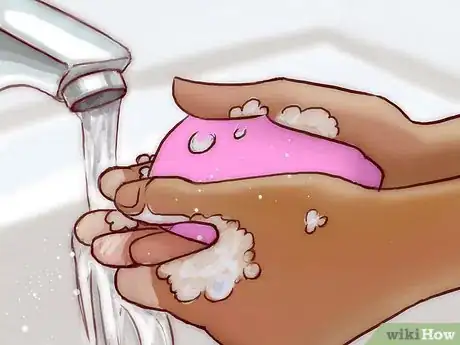
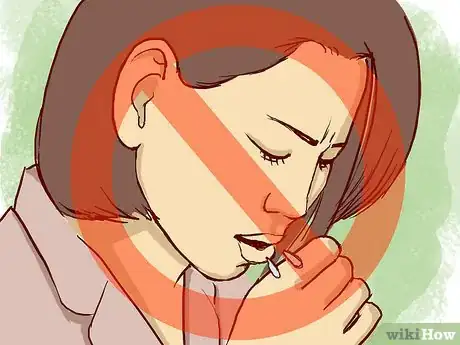
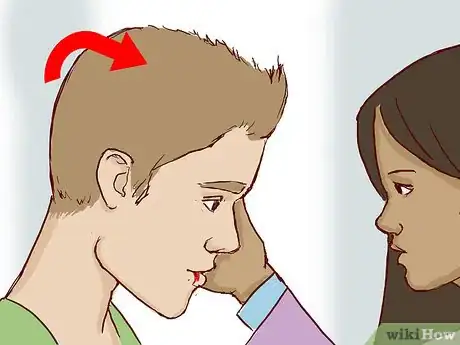
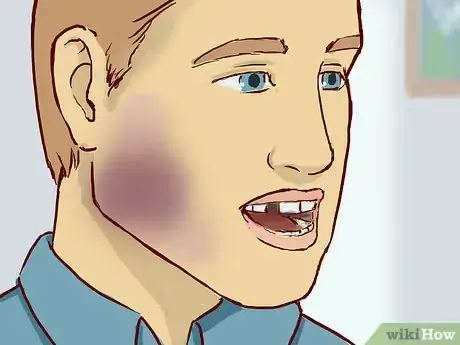
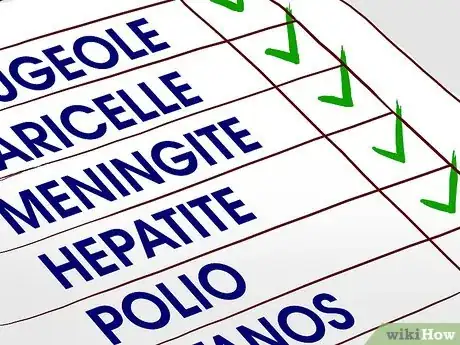
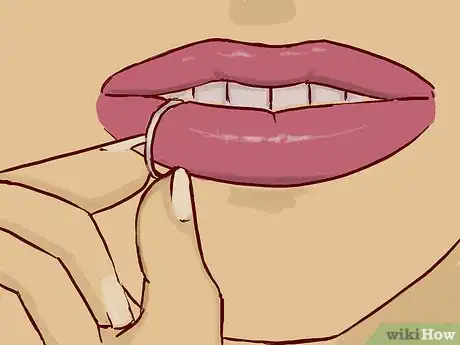
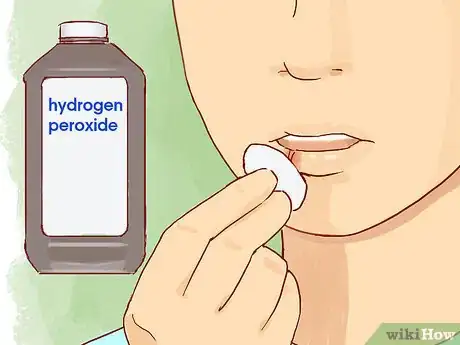
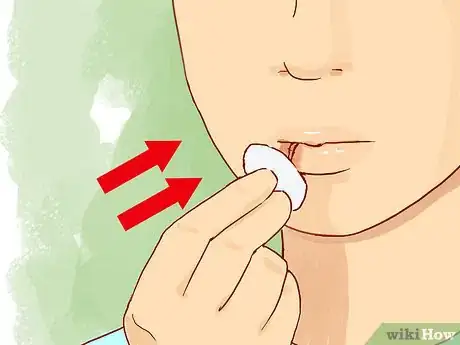
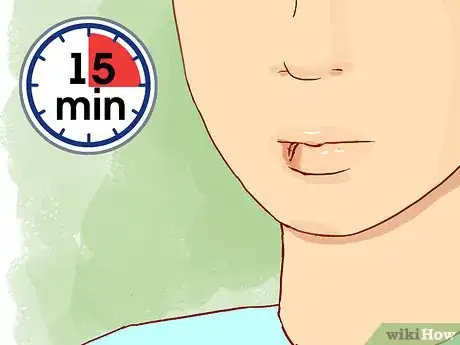
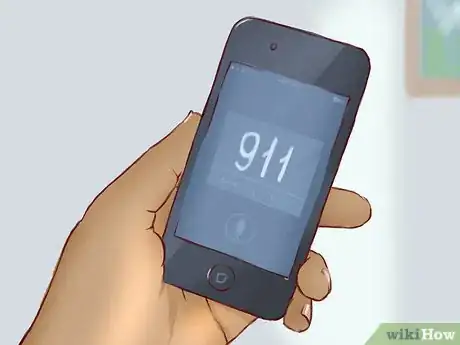
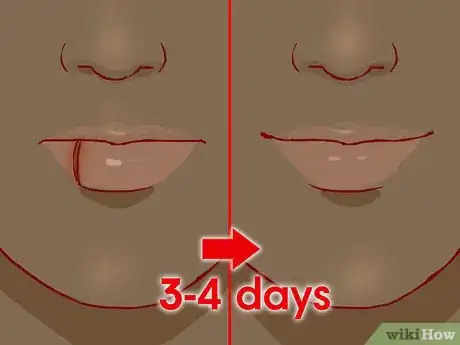
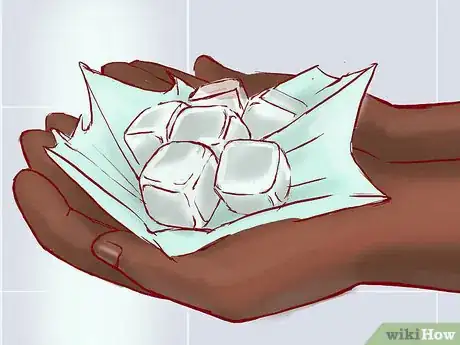
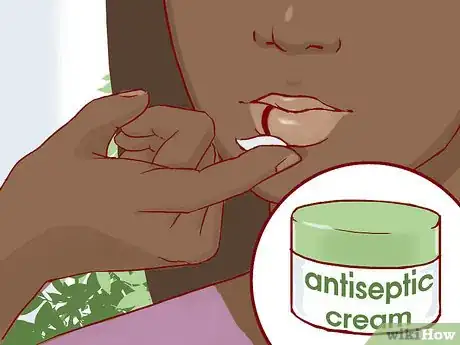
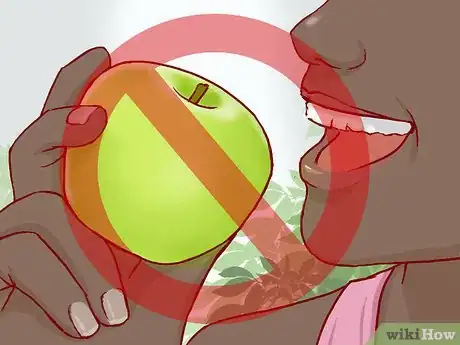

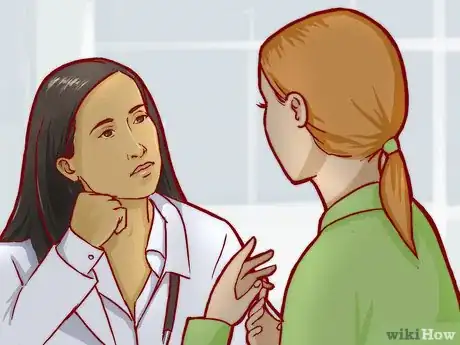
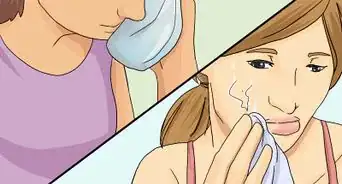
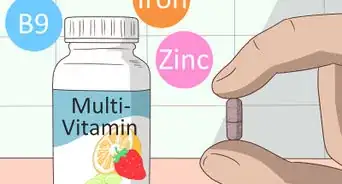
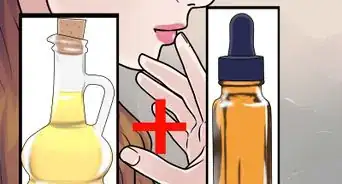
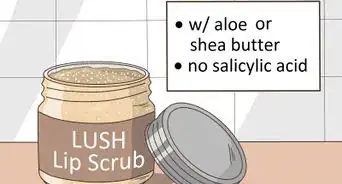

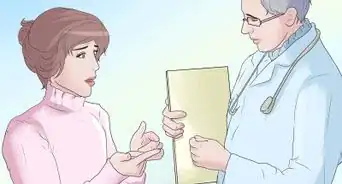

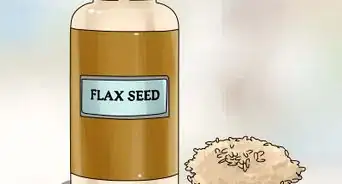
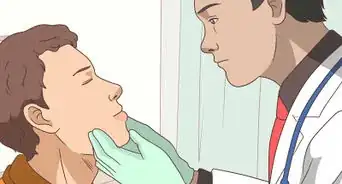
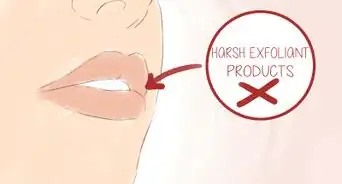
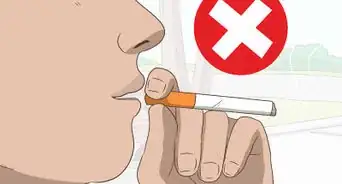
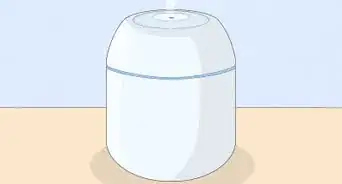









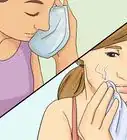
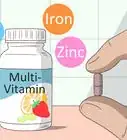
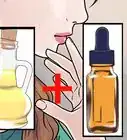
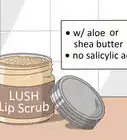



































Medical Disclaimer
The content of this article is not intended to be a substitute for professional medical advice, examination, diagnosis, or treatment. You should always contact your doctor or other qualified healthcare professional before starting, changing, or stopping any kind of health treatment.
Read More...